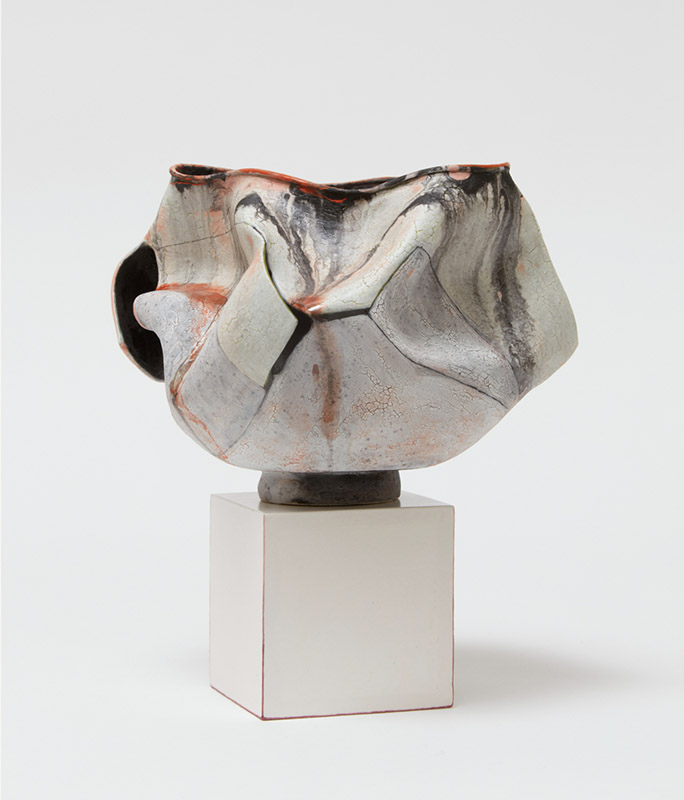
You’ve heard, most likely, of George E. Ohr, the “mad potter of Biloxi.” How about Hugh C. Robertson? He was Ohr’s contemporary and opposite, working not down south but up north (in the Boston area). Unlike Ohr he was no performer, happier when left alone to his glazes. Most importantly, he had the instincts not of a sculptor, but a painter.
Robertson’s gorgeous, falling veils of color serve as the opening curtain, if you like, for Painting in the Dark – an exhibition I have recently curated at James Cohan Gallery in Tribeca, together with the contemporary artist Kathy Butterly. It was Butterly who suggested that we include Robertson, having come to appreciate his perpetually under-appreciated genius when both artists were included in Shapes From Outta Nowhere, a major exhibition and book at the Metropolitan Museum of Art, featuring the collection of Robert A. Ellison, Jr.
Like the Met’s exhibition, Painting in the Dark covers a little more than a century. Admittedly we have many fewer artists, only seven: Robertson and Butterly, of course; midcentury abstractionists Toshiko Takaezu and Rudy Staffel; self-taught miniaturist Rose Cabat; and contemporary ceramists Tony Marsh and (all the way from Norway) Marit Tingleff.
We chose these figures for their deep involvement in ceramics’ painterly possibilities. Mark-making, expressionism, gesture, palette, layering – all of these have just as much importance in ceramics as they do in oil or acrylic on canvas. The difference, of course, is signaled in our title. Ceramists cannot see the results of their glazing until they open the kiln; when they do their painting, they’re doing it in shades of beige.

Test tiles can help, and multiple rounds of firing are always possible. Yet every great painterly pot is, fundamentally, an encounter between intention and chance. This is the real subject of Painting in the Dark. It’s been a great excuse to gather together some wonderful objects. Beneath it all, though, is the idea that ceramics are to some extent gifts from the kiln gods – wondrous apparitions, even to those who made them.
Painting in the Dark is on view at the James Cohan Gallery, 52 Walker Street, NYC, through August 5.


